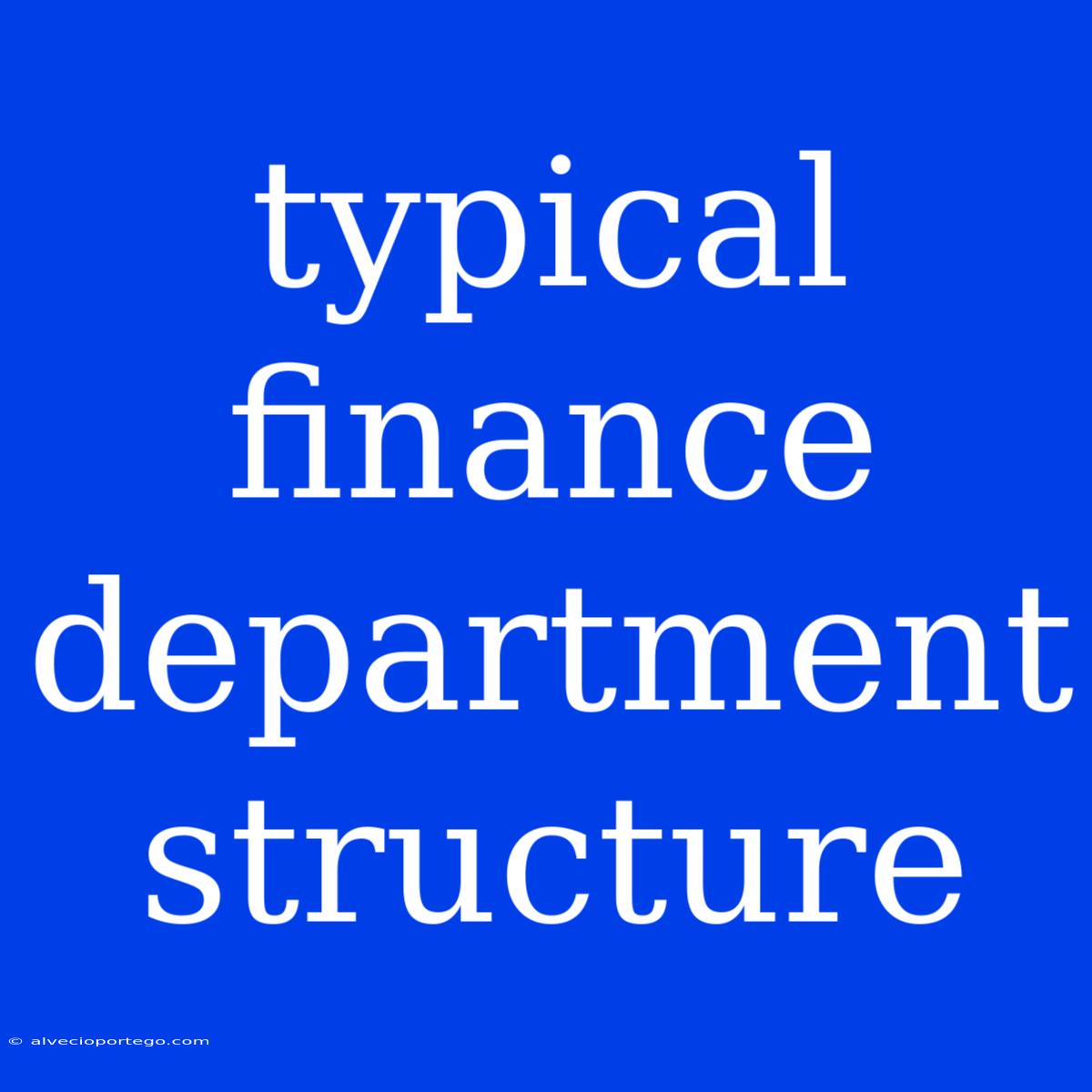Understanding the Structure of a Finance Department
The finance department is the backbone of any successful organization. It plays a crucial role in managing finances, ensuring financial stability, and driving strategic decision-making. Understanding the typical structure of a finance department can provide valuable insights into its functions and how it contributes to the overall success of a business.
The Core Pillars of a Finance Department
Most finance departments are organized around a core set of functions, each contributing to the overall financial health of the organization. These include:
1. Accounting: This function focuses on maintaining accurate financial records, preparing financial statements, and ensuring compliance with accounting standards.
- Key Responsibilities:
- Maintaining accounting records and financial statements.
- Preparing budgets and financial forecasts.
- Analyzing financial data and providing insights.
- Managing accounts payable and receivable.
- Ensuring compliance with accounting regulations.
- Typical Roles:
- Accounts Payable Clerk
- Accounts Receivable Clerk
- Bookkeeper
- Accountant
- Controller
2. Financial Planning & Analysis (FP&A): This function analyzes historical data and current trends to predict future financial performance and inform strategic decision-making.
- Key Responsibilities:
- Developing financial models and forecasts.
- Analyzing business performance and identifying key drivers.
- Supporting strategic planning and budgeting.
- Providing financial analysis to management.
- Typical Roles:
- Financial Analyst
- Budget Analyst
- FP&A Manager
3. Treasury: This function manages the organization's cash flow and investments.
- Key Responsibilities:
- Managing cash flow and liquidity.
- Investing surplus cash.
- Securing financing.
- Managing foreign exchange risk.
- Typical Roles:
- Treasury Analyst
- Cash Manager
- Investment Manager
4. Tax: This function manages the organization's tax compliance and optimization.
- Key Responsibilities:
- Filing tax returns.
- Managing tax audits.
- Implementing tax strategies for optimization.
- Ensuring compliance with tax regulations.
- Typical Roles:
- Tax Accountant
- Tax Manager
5. Internal Audit: This function ensures the accuracy and effectiveness of internal controls and financial reporting.
- Key Responsibilities:
- Conducting internal audits.
- Identifying and mitigating financial risks.
- Ensuring compliance with internal policies and procedures.
- Typical Roles:
- Internal Auditor
- Audit Manager
Organizational Structure of a Finance Department
The exact structure of a finance department will vary depending on the size and complexity of the organization. However, a common structure may include:
1. Chief Financial Officer (CFO): The CFO oversees all finance-related operations and reports to the CEO or Board of Directors.
2. Senior Finance Managers: These managers oversee specific finance functions such as accounting, FP&A, treasury, tax, and internal audit.
3. Finance Teams: Each finance function typically has a team of specialists who report to the respective manager.
4. Shared Service Centers: Some companies utilize shared service centers to centralize specific finance functions like accounting or payroll. This can improve efficiency and reduce costs.
Factors Affecting Finance Department Structure
The structure of a finance department is influenced by several factors, including:
- Industry: The specific requirements and challenges of different industries will impact the structure of the finance department.
- Company Size: Larger companies often have more complex finance departments with dedicated teams for each function.
- Growth Stage: Startups and growing companies may have a leaner finance department structure, while mature companies may have more specialized teams.
- Technology: Advancements in technology have enabled automation of many finance tasks, streamlining operations and changing the structure of the department.
The Future of Finance Departments
Finance departments are constantly evolving to adapt to changing business needs and technological advancements.
- Data Analytics: Leveraging data analytics to gain insights and make more informed financial decisions is becoming increasingly important.
- Automation: Automation of repetitive tasks like data entry and reconciliation is freeing up finance professionals to focus on higher-value activities.
- Collaboration: Finance teams are working more closely with other departments, such as sales and operations, to drive business performance.
- Sustainability: The role of finance departments in managing environmental and social risks is growing in importance.
Understanding the typical structure of a finance department and the factors that influence its design is crucial for any organization seeking to maximize its financial performance and contribute to overall business success.

